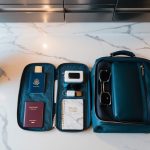Crafting the Perfect DIY Adventure: A Step-by-Step Planning Guide
Packing Essential Items
When setting out on a DIY adventure, it’s crucial to prepare by packing essential items that ensure safety and comfort during your journey. Consider personal preferences and specific needs to create a tailored packing list that includes all necessary gear.
Customizing Your Packing List
He or she must start by identifying the purpose and duration of their trip. This will guide what to include and how much to pack. For a hiking trip, sturdy footwear, a map, compass, and hydration supplies are critical. For a camping excursion, tent equipment and a portable stove could be crucial. Clothing should be chosen based on expected weather conditions. Layers might be necessary for fluctuating temperatures.
It’s smart to add sun protection regardless of the destination. Sunglasses, sunscreen, and a wide-brimmed hat can protect against harmful UV rays. A reusable water bottle helps with hydration needs and is environmentally friendly. Snacks or lightweight meals can keep energy levels stable. Including items like a multi-tool or a flashlight provides extra convenience.
Prioritizing Safety and Comfort
Packing for safety involves carrying a well-stocked first aid kit. This should contain bandages, antiseptic wipes, pain relief medication, and any personal prescriptions. A whistle can serve as an emergency signal if needed. Keeping navigation tools or a personal locator beacon increases security.
Comfortable clothing and shoes help minimize discomfort, especially during physical activities. Choosing breathable, quick-drying fabrics aids in staying comfortable no matter the climate. A lightweight sleeping bag and portable mat can enhance rest for those on longer adventures.
Proper planning ensures essentials are packed for both protection and ease, making any adventure more enjoyable.
Preparing for Safety and Emergencies
Preparation is key to ensuring a safe DIY adventure. This includes adhering to safety guidelines and having a well-stocked first aid kit.
Following Safety Guidelines
Adhering to safety guidelines significantly reduces risks. Begin by researching the destination to understand potential hazards. Familiarize yourself with local safety regulations applicable to the activities you plan to undertake.
Encourage everyone involved to use appropriate safety gear suited for the activities. Regular safety checks are vital. Inspect equipment thoroughly before use, checking for wear and tear. Planning includes informing someone trustworthy about your itinerary. Ensure communication tools are available, such as a charged phone or radio, in case you need to contact someone for help.
Stocking Medical Supplies
Having the right medical supplies can be crucial. Start with a comprehensive first aid kit. Essential items include bandages, antiseptic wipes, and pain relievers. Tailor the kit to the specific needs of the group and activities.
Consider additional supplies based on known personal health needs, like allergy medications or prescription drugs. Keep medical supplies in a waterproof container to protect them. Regularly check expiration dates and replenish used or expired items. Ensure everyone knows where the supplies are kept and how to use them. Understanding how to apply basic first aid techniques can make a significant difference in emergencies.



